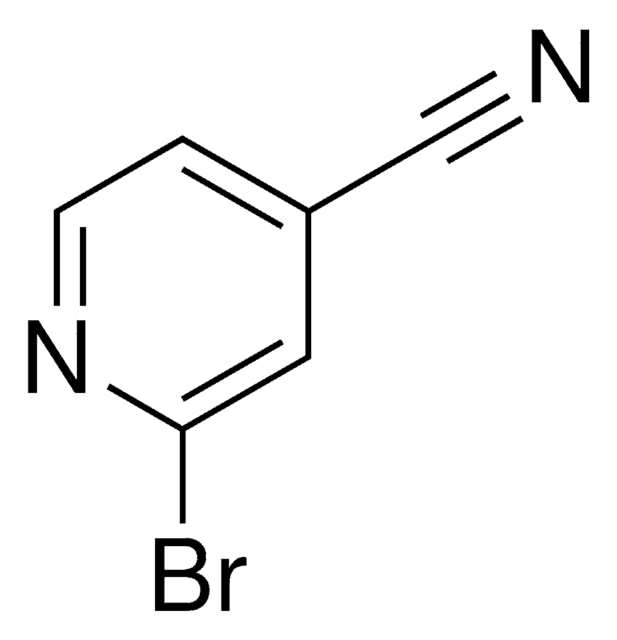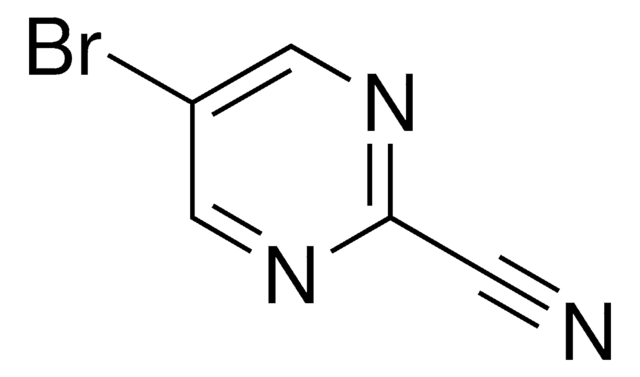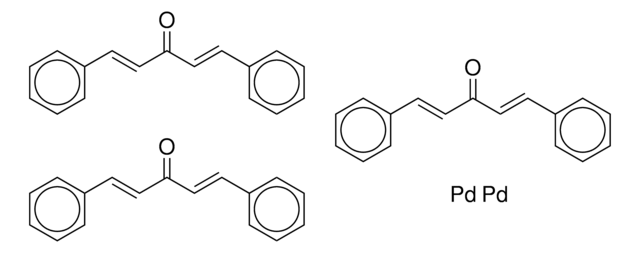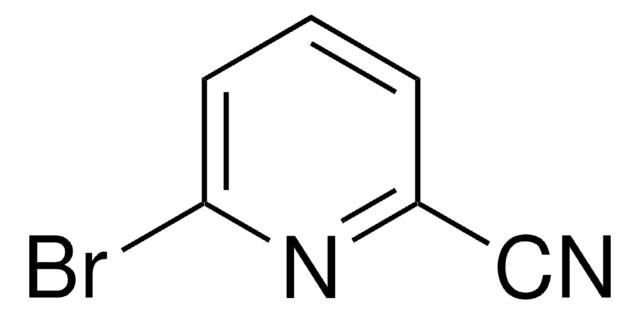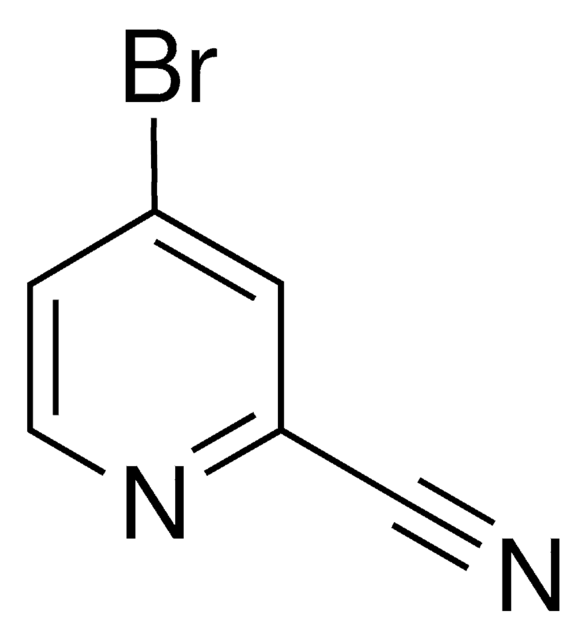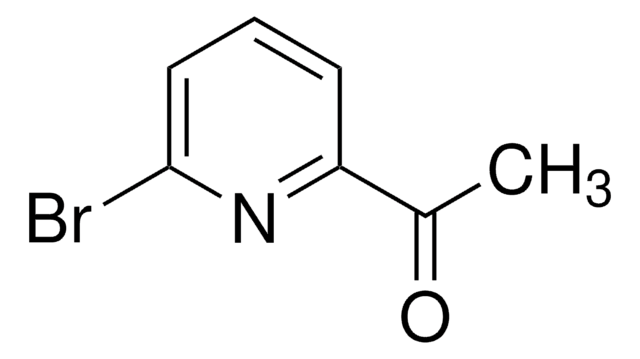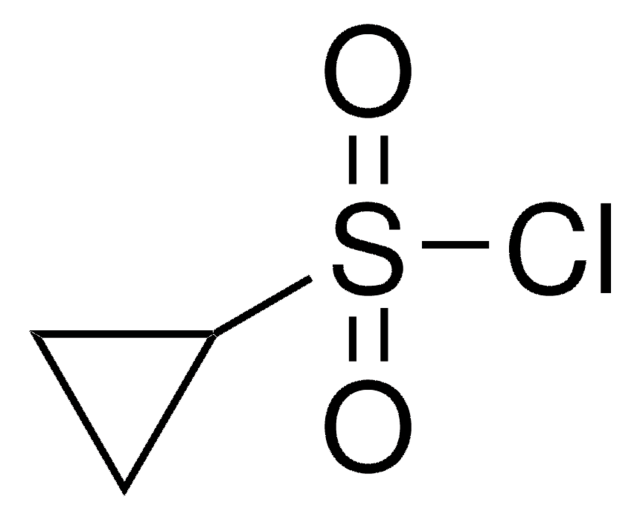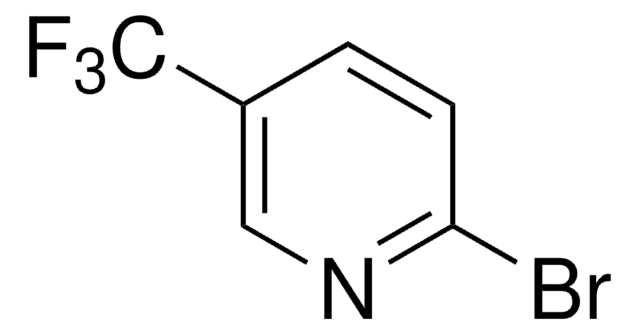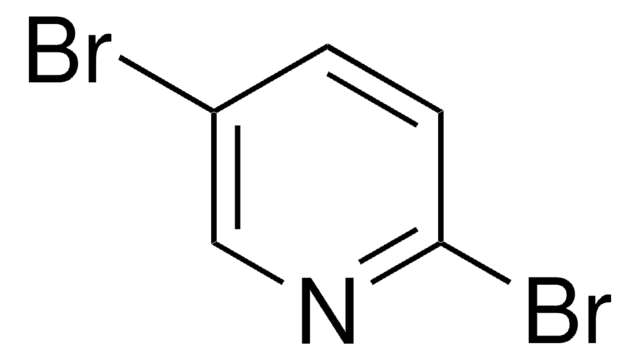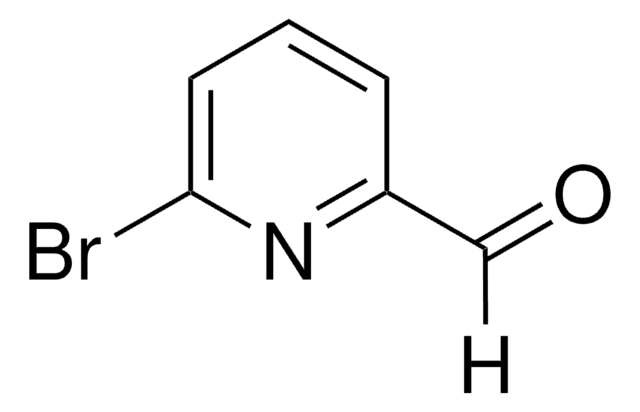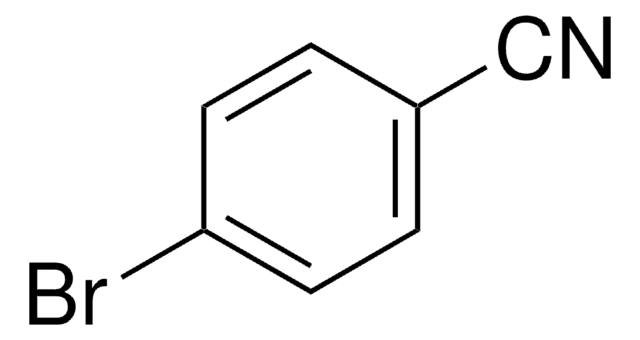All Photos(3)
About This Item
Empirical Formula (Hill Notation):
C6H3BrN2
CAS Number:
Molecular Weight:
183.01
MDL number:
UNSPSC Code:
12352100
PubChem Substance ID:
NACRES:
NA.22
form:
solid
Assay:
97%
Recommended Products
Quality Level
Assay
97%
form
solid
bp
100-110 °C/3 mmHg (lit.)
mp
128-132 °C (lit.)
functional group
bromo
nitrile
SMILES string
Brc1ccc(nc1)C#N
InChI
1S/C6H3BrN2/c7-5-1-2-6(3-8)9-4-5/h1-2,4H
InChI key
DMSHUVBQFSNBBL-UHFFFAOYSA-N
Application
5-Bromo-2-pyridinecarbonitrile can be used in the synthesis of aza-terphenyl diamidine analogs, which exhibits potent antiprotozoal activity. It can also be used in the synthesis of pyridine-diketopyrrolopyrrole(PyDPP), a building block for preparing low band-gap copolymers for use as electron donor in polymer solar cells.
Signal Word
Danger
Hazard Statements
Precautionary Statements
Hazard Classifications
Acute Tox. 3 Oral - Eye Dam. 1 - Skin Irrit. 2 - STOT SE 3
Target Organs
Respiratory system
Storage Class Code
6.1C - Combustible acute toxic Cat.3 / toxic compounds or compounds which causing chronic effects
WGK
WGK 3
Flash Point(F)
Not applicable
Flash Point(C)
Not applicable
Personal Protective Equipment
dust mask type N95 (US), Eyeshields, Gloves
Choose from one of the most recent versions:
Already Own This Product?
Find documentation for the products that you have recently purchased in the Document Library.
Customers Also Viewed
"Synthesis and activity of azaterphenyl diamidines against Trypanosoma brucei rhodesiense and Plasmodium falciparum"
Hu L, et al.
Bioorganic & Medicinal Chemistry, 17(18), 6651-6658 (2009)
"Synthesis of pyridine-capped diketopyrrolopyrrole and its use as a building block of low band-gap polymers for efficient polymer solar cells"
Jung WJ, et al.
Chemical Communications (Cambridge, England), 49(76), 8495-8497 (2013)
Our team of scientists has experience in all areas of research including Life Science, Material Science, Chemical Synthesis, Chromatography, Analytical and many others.
Contact Technical Service